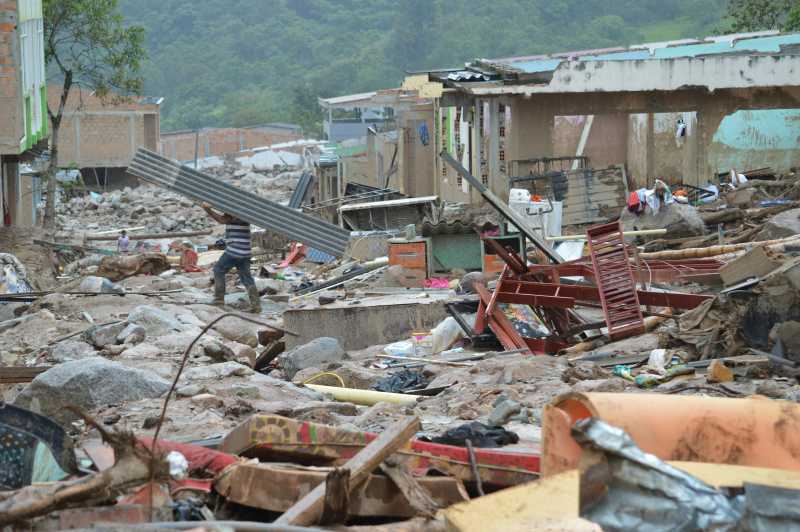When disaster strikes, the aftermath can be overwhelming. The role of property restoration in disaster management is crucial in helping individuals and communities recover and rebuild. At Projekt Restoration, we understand the importance of swift and effective property restoration. As your go-to water, fire, and mold restoration experts, we are committed to providing comprehensive solutions that address the full spectrum of damage caused by disasters. Our services extend beyond basic restoration to include mold assessment, biohazard cleanup, and reconstruction services. We believe in not just restoring properties, but restoring peace of mind. Our team of professionals is equipped with the knowledge and skills to handle any disaster scenario, ensuring your property is restored to its pre-disaster condition. With our expertise in disaster management, we aim to minimize the impact of disasters and expedite the recovery process.
Understanding the Concept of Property Restoration

Property restoration is a critical aspect of disaster management, playing a pivotal role in bringing life back to normalcy after a disaster. It involves the process of repairing and restoring a property that has been damaged by natural or man-made disasters. This can include water damage, fire damage, mold infestation, or biohazard contamination.
The process of property restoration begins with a thorough mold assessment and infrared thermal imaging to identify the extent of the damage. This is followed by the necessary remediation processes such as dehumidification, fire damage restoration, or biohazard clean-up.
- For instance, in the case of water damage, the restoration process includes water extraction, drying, dehumidification, and disinfection.
- For fire damage, it involves smoke and soot removal, deodorization, and structural repair.
The goal of property restoration is not just to repair the damage but also to prevent future incidents by addressing the root cause of the problem. This is where consulting services come into play, providing expert advice on disaster prevention and property maintenance.
In conclusion, property restoration is a comprehensive approach to disaster management, ensuring that properties are not only repaired but also strengthened against future disasters. It’s a crucial service that helps communities recover and rebuild in the aftermath of a disaster.
The Importance of Property Restoration in Disaster Management
Property restoration plays a pivotal role in disaster management, serving as a crucial step towards normalcy after a catastrophic event. It involves a series of processes, including damage assessment, clean-up, repair, and renovation, aimed at returning the property to its pre-disaster condition.
One of the primary benefits of property restoration is the mitigation of further damage. For instance, water damage from flooding can lead to mold growth if not addressed promptly. Mold removal services are essential in such cases to prevent health hazards and structural damage.
Property restoration also helps in salvaging valuable items. Professionals in content cleaning can restore personal belongings, important documents, and sentimental items, reducing the overall loss experienced by the property owner.
Moreover, property restoration is a cost-effective solution in the long run. While the upfront costs may seem high, it is significantly cheaper than the alternative – complete property replacement.
In addition, property restoration services often work closely with insurance companies, assisting property owners in navigating the often complex claims process. This collaboration ensures that the property owner gets the maximum benefit from their insurance coverage.
Lastly, property restoration contributes to community resilience. By quickly restoring homes and businesses, communities can bounce back faster from disasters, minimizing the social and economic impacts.
For more information or to schedule a consultation, visit Projekt Restoration.
The Process of Property Restoration After a Disaster

Property restoration after a disaster is a crucial aspect of disaster management. This process involves a series of steps aimed at returning the property to its pre-disaster condition. Initially, a thorough assessment of the damage is conducted to determine the extent and type of restoration required. This may involve infrared thermal imaging to detect hidden water or heat damage.
Once the damage is assessed, the cleanup process begins. This could involve biohazard clean-up in cases of biological or chemical contamination, or water damage restoration in the event of flooding. Debris removal and dehumidification are also key steps in this stage.
Following the cleanup, the restoration process commences. This could involve reconstruction of damaged structures, content cleaning to restore personal belongings, and mold removal to ensure a safe and healthy environment.
Throughout the process, professional consultation is often necessary to guide homeowners and ensure the restoration is carried out effectively and efficiently. This can be facilitated through consulting services offered by restoration companies.
Finally, the property is inspected to ensure it is safe for occupancy. This comprehensive approach to property restoration ensures that homes and businesses can recover from disasters as quickly and efficiently as possible, minimizing disruption and helping communities to get back on their feet.
The Role of Professionals in Property Restoration

In the realm of disaster management, property restoration plays a pivotal role. This process is not a simple task that can be handled by anyone; it requires the expertise and skills of professionals. These professionals are trained to assess the damage, plan the restoration process, and execute the plan efficiently to restore the property to its pre-disaster state.
The professionals involved in property restoration include contractors, architects, engineers, and technicians. They work together to ensure that the restoration process is carried out effectively and safely. The contractors and architects are responsible for the structural integrity of the property. They assess the damage and plan the reconstruction process. The engineers ensure that the property’s systems, such as electrical and plumbing, are restored properly. The technicians handle the cleaning and dehumidification process, removing any water or mold that may have accumulated due to the disaster.
These professionals are also trained to handle different types of disasters. For instance, they can handle fire damage, water damage, and even biohazard clean-up. They use advanced tools and techniques, such as infrared thermal imaging, to detect hidden damage and ensure that the restoration process is thorough.
In conclusion, professionals play a crucial role in property restoration. They have the knowledge, skills, and tools necessary to restore a property effectively and safely after a disaster. Therefore, it is important to hire professionals for property restoration in the aftermath of a disaster.
Case Studies: Successful Property Restoration Projects
In the realm of disaster management, property restoration plays a pivotal role. It not only involves the repair of physical damage but also the mitigation of potential health risks, such as mold growth. Our case studies highlight several successful property restoration projects, demonstrating the effectiveness of our comprehensive approach.
One of our notable projects involved water damage restoration in Cooper City. After a severe flood, we were able to restore the property to its original state, preventing further damage and potential health hazards. Our team utilized advanced techniques such as dehumidification and infrared thermal imaging to ensure a thorough restoration process.
Another successful project was a fire damage restoration in Fort Lauderdale. Despite the extensive damage, our team was able to salvage valuable items through our content cleaning service and rebuild the property using our reconstruction services.
We also specialize in biohazard cleanups, as evidenced by our project in Biohazard Clean-up. Our team ensured the property was safe and habitable again, adhering to strict safety protocols throughout the process.
These case studies underscore our commitment to providing top-notch property restoration services. Whether it’s water damage, fire damage, mold infestation, or biohazard cleanup, our team is equipped with the skills and knowledge to handle any restoration project effectively.
The Impact of Property Restoration on Community Recovery
In the realm of disaster management, property restoration plays a pivotal role in fostering community recovery. When disaster strikes, it often leaves properties in a state of disrepair, causing significant distress to the affected communities. However, through the strategic application of restoration techniques, these properties can be brought back to their original state, thereby aiding in the overall recovery of the community.
The process of property restoration involves a series of steps, starting from initial damage assessment to the final stages of reconstruction. This process is often facilitated by professional restoration services like Projekt Restoration, who offer a comprehensive range of services, including fire damage restoration, water damage restoration, and mold assessment, among others.
The impact of property restoration on community recovery is multifaceted. Firstly, it helps in the physical rebuilding of the community, restoring damaged properties to their original state. This not only provides a sense of normalcy but also boosts the morale of the community members. Secondly, property restoration aids in the economic recovery of the community. Restored properties can be put back on the market, thereby contributing to the local economy. Lastly, property restoration also has a psychological impact on the community. The sight of restored properties serves as a beacon of hope, signaling the community’s resilience and ability to bounce back from adversity.
In conclusion, property restoration is a crucial component of disaster management, playing a significant role in the recovery of affected communities. By restoring properties, we are not just rebuilding structures, but also helping communities regain their sense of normalcy and hope.
Future Trends in Property Restoration and Disaster Management
In the evolving landscape of disaster management, property restoration plays a pivotal role. The future trends in this field are driven by technological advancements and a growing emphasis on sustainability. Advanced technologies like infrared thermal imaging are increasingly being used to assess damage and plan restoration strategies. This non-invasive method allows professionals to detect hidden water damage, locate leaks, and identify areas of energy loss, making the restoration process more efficient and effective.
Another significant trend is the use of dehumidification techniques to mitigate mold growth, a common issue in water-damaged properties. This process not only restores the property but also ensures a healthy environment for the occupants.
Sustainability is also a key focus in property restoration. Green building materials and energy-efficient methods are being adopted to reduce the environmental impact of restoration projects. This approach aligns with the global push towards sustainability and offers long-term benefits for property owners.
In terms of disaster management, there is a shift towards proactive measures. This includes conducting regular mold assessments and implementing preventive maintenance to minimize potential damage from disasters.
Moreover, the use of data analytics and predictive modeling is transforming disaster management. These tools enable professionals to anticipate potential disasters and plan accordingly, thereby reducing the extent of damage and the cost of restoration.
In conclusion, the future of property restoration and disaster management is characterized by technological innovation, sustainability, and a proactive approach. These trends are set to revolutionize the industry and enhance its role in disaster management.
In conclusion, property restoration plays an indispensable role in disaster management. It not only aids in bringing life back to normalcy but also contributes to the economic recovery of the affected region. The process of restoration, which includes assessment, mitigation, repair, and renovation, is a beacon of hope for disaster-stricken communities. It is a testament to human resilience and our ability to rebuild and recover. However, it is essential to remember that effective property restoration requires a well-planned strategy, professional expertise, and a collaborative effort from all stakeholders. Therefore, investing in property restoration is investing in a safer and more resilient future.





